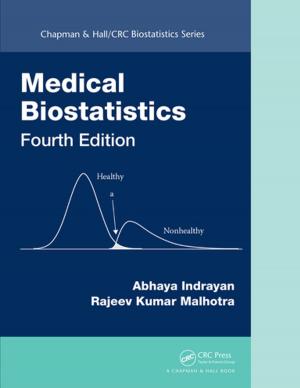Reproduction and Development in Mollusca
Nonfiction, Science & Nature, Science, Biological Sciences, Marine Biology, Nature, Animals| Author: | T. J. Pandian | ISBN: | 9781351779647 |
| Publisher: | CRC Press | Publication: | September 7, 2018 |
| Imprint: | CRC Press | Language: | English |
| Author: | T. J. Pandian |
| ISBN: | 9781351779647 |
| Publisher: | CRC Press |
| Publication: | September 7, 2018 |
| Imprint: | CRC Press |
| Language: | English |
This book is perhaps the first attempt to comprehensively project the uniqueness of molluscs, covering almost all aspects of reproduction and development from aplacophorans to vampyromorphic cephalopods. Molluscs are unique for the presence of protective external shell, defensive inking, geographic distribution from the depth of 9,050 m to an altitude of 4,300 m, gamete diversity, the use of nurse eggs and embryos to accelerate the first few mitotic divisions in embryos, the natural occurrence of androgenics in a couple of bivalves, viable induced tetraploids, gigantism induced by elevated ploidy, the complementary role played by mitochondrial genome in sex determination by nuclear genes and the uptake and accumulation of steroid hormone from surrounding waters. In molluscs, sexuality comprises of gonochorism (< 75 %) and hermaphroditism, which itself includes simultaneous (> 24%), protandry (< 1 %), Marian and serial. In them, the presence of shell affords iteroparity and relatively longer life span in prosobranchs and bivalves but its absence semelparity and short life span in opisthobranchs and cephalopods. Within semelparity, gonochorism facilitates faster growth and larger body size but hermaphroditism small body size. In them, sex is irrevocably determined at fertilization by a few unknown genes and is not amenable to any environmental influence. However, the sex determining mechanism is more a family trait in bivalves. Primary sex differentiation is also fixed and not amenable to environmental factor but secondary differentiation is labile, protracted and amenable to environmental factors. Both sex differentiation and reproductive cycle are accomplished and controlled solely by neurohormones. In these processes, the role of steroid hormones may be alien to molluscs.
This book is perhaps the first attempt to comprehensively project the uniqueness of molluscs, covering almost all aspects of reproduction and development from aplacophorans to vampyromorphic cephalopods. Molluscs are unique for the presence of protective external shell, defensive inking, geographic distribution from the depth of 9,050 m to an altitude of 4,300 m, gamete diversity, the use of nurse eggs and embryos to accelerate the first few mitotic divisions in embryos, the natural occurrence of androgenics in a couple of bivalves, viable induced tetraploids, gigantism induced by elevated ploidy, the complementary role played by mitochondrial genome in sex determination by nuclear genes and the uptake and accumulation of steroid hormone from surrounding waters. In molluscs, sexuality comprises of gonochorism (< 75 %) and hermaphroditism, which itself includes simultaneous (> 24%), protandry (< 1 %), Marian and serial. In them, the presence of shell affords iteroparity and relatively longer life span in prosobranchs and bivalves but its absence semelparity and short life span in opisthobranchs and cephalopods. Within semelparity, gonochorism facilitates faster growth and larger body size but hermaphroditism small body size. In them, sex is irrevocably determined at fertilization by a few unknown genes and is not amenable to any environmental influence. However, the sex determining mechanism is more a family trait in bivalves. Primary sex differentiation is also fixed and not amenable to environmental factor but secondary differentiation is labile, protracted and amenable to environmental factors. Both sex differentiation and reproductive cycle are accomplished and controlled solely by neurohormones. In these processes, the role of steroid hormones may be alien to molluscs.















